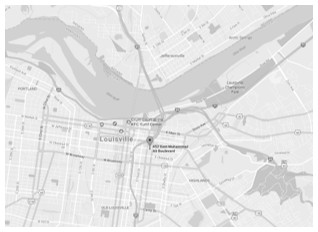Education, in-home inspections key to fire prevention
Keeping stove tops clear of dish towels and oven mitts, placing candles in sturdy fire-proof containers, and plugging space heaters directly into the wall are a few ways to prevent house fires. Implementing a home safety check list can prevent burn injuries like those experienced by 300 children and more than 100 older adults each year in the Louisville area.
University
of Louisville School of Nursing associate professor Carlee Lehna, Ph.D., and her team
are collaborating with the Office of Child  Advocacy at Kosair Children’s
Hospital and the Louisville Fire Department (LFD) to enhance fire prevention
education. Supported by a $300,000 grant from the Federal Emergency Management Agency (FEMA), their goal is to reduce burn injuries in newborns and senior
adults.
Advocacy at Kosair Children’s
Hospital and the Louisville Fire Department (LFD) to enhance fire prevention
education. Supported by a $300,000 grant from the Federal Emergency Management Agency (FEMA), their goal is to reduce burn injuries in newborns and senior
adults.
“Infants and older adults are at a disproportionately higher risk for burn injuries – they are the most vulnerable populations in the community,” Lehna said.
The LFD has hosted many planning meetings, and firefighters have trained research team members with fire safety knowledge to use in their education programs.
Two separate, parallel studies will evaluate differences in learning settings ranging from classrooms to in-hospital discharge education to home visits, determining the most effective way to talk with people in each population group about fire prevention.
 The newborn fire
safety program will compare education needs of 50 parents with babies in the
neonatal intensive care unit to 50 parents of babies without special needs.
Within each group of 50, some parents will receive education in their hospital
room as part of the discharge plan, and some will learn through pre-natal classes
or support groups. The education component for both includes a pre-test, a DVD
about creating a safe home, a post-test and a follow-up phone call. They also may
opt to participate in a home safety check conducted by a research team member.
The newborn fire
safety program will compare education needs of 50 parents with babies in the
neonatal intensive care unit to 50 parents of babies without special needs.
Within each group of 50, some parents will receive education in their hospital
room as part of the discharge plan, and some will learn through pre-natal classes
or support groups. The education component for both includes a pre-test, a DVD
about creating a safe home, a post-test and a follow-up phone call. They also may
opt to participate in a home safety check conducted by a research team member.
A similar
program for the elderly also is underway, comparing education needs of 50
 homebound individuals to 50 non-homebound seniors receiving classroom
instruction at community organizations and churches. They too, will take a
pre-test, watch a DVD, take a post-test and receive a follow-up call from a
team member with the option for a home safety check.
homebound individuals to 50 non-homebound seniors receiving classroom
instruction at community organizations and churches. They too, will take a
pre-test, watch a DVD, take a post-test and receive a follow-up call from a
team member with the option for a home safety check.
Lehna said she hopes her education methodologies will make a difference both locally and nationally in the area of burn prevention. Findings from the two programs will be presented to elected officials, with an aim of promoting changes in legislation and policy for home fire safety. In addition, Lehna will urge organizations and businesses to make changes, such as asking hospitals to include a fire prevention check-list in every discharge packet for new moms and advising senior living centers to regularly practice a fire escape plan.
